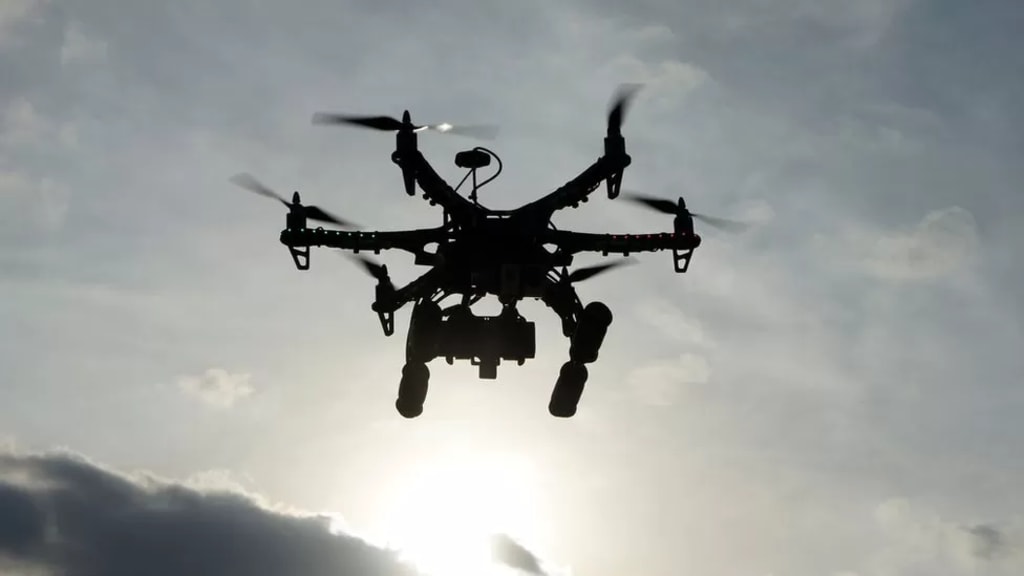Eagle X: Drones Transform Emergency Response
Drones

In a pioneering move toward enhancing emergency response capabilities, the Norfolk Police are gearing up for a groundbreaking initiative known as "Project Eagle X." This initiative is set to explore the potential of utilizing drones as first responders during critical situations. The initial trials, scheduled to commence next year, are particularly significant due to the inherent challenges associated with limited access to helicopters operated by the National Police Air Service.
Project Eagle X: Unveiling the Future of Emergency Response
Under the ambitious banner of Project Eagle X, the Norfolk Police are poised to test the viability of deploying drones as first responders—innovatively labelled "drones as first responders" (DFRs). The rationale behind this forward-looking project stems from the need for alternative aerial support, especially in areas where traditional helicopter access is constrained.
Testing Ground: Norfolk Selected for Initial Trials
The choice of Norfolk as the testing ground for Project Eagle X is strategic. The inherent limitations on helicopter availability operated by the National Police Air Service have directed attention to the feasibility of employing drones in emergency response scenarios. These initial trials aim to assess the effectiveness of DFRs in providing swift and crucial information during unfolding incidents.
Revolutionizing Emergency Response Protocols
Should the initial trials prove successful, Project Eagle X has the potential to revolutionize the landscape of emergency response protocols. DFRs stationed strategically on buildings will be remotely operated, enabling them to rapidly respond to developing scenes and furnish law enforcement with vital early information. This innovative approach seeks to surpass traditional aerial support, particularly in situations where helicopter accessibility is restricted.
Collaborative Testing: Thames Valley and Hampshire Forces Join In
As part of the comprehensive evaluation of Project Eagle X, collaborative testing will extend beyond Norfolk. Thames Valley and Hampshire forces are slated to participate in subsequent trials, providing a more diverse set of scenarios to assess the adaptability and efficacy of DFRs in different operational environments.
Global Precedents: Lessons from San Diego, Belgium, and the Netherlands
The initiative draws inspiration from similar trials conducted globally, with San Diego, USA, serving as a notable precedent. Beyond the borders, upcoming tests are scheduled in Belgium and the Netherlands, showcasing a collaborative effort to explore the potential of DFRs as a transformative force in emergency response.
Neil Sexton's Insight: Advancing Situational Awareness with DFRs
Neil Sexton, an advisor to the National Police Chiefs' Council specializing in drone usage, sheds light on the concept of DFRs. These autonomous drones, securely stored on urban rooftops, can be remotely activated in response to 999 emergency calls. Flying overhead, they provide crucial situational awareness not only to the control station but also to on-the-ground first responders.
Beyond Traditional Communication: The Power of DFRs
Mr. Sexton emphasizes the distinct advantages of having a remote aircraft swiftly providing situational awareness during a developing incident. This, he argues, surpasses the information obtained through phone calls from stressed members of the public. The DFRs' overhead perspective can instantly discern the severity of an incident, enabling quick and informed decisions about the required emergency resources.
Regulatory Milestones: Amendments to Drone Operation Rules
Presently, approximately 400 drones are in use by police forces in England and Wales, operating within operators' lines of sight. Plans are underway to amend regulations, allowing beyond-line-of-sight operations. Initial trials in areas with closed-off airspace are on the horizon, marking a pivotal step toward realizing the full potential of DFRs in reshaping the landscape of emergency response capabilities.
Project Eagle X: A Technological Leap for Public Safety
In summation, Project Eagle X represents a significant leap forward in integrating cutting-edge technology to enhance emergency response capabilities and bolster public safety. The marriage of autonomous drones and emergency response, if successful, promises to usher in a new era where DFRs become indispensable assets in managing and mitigating critical incidents swiftly and effectively.
Overcoming Challenges: Addressing Public Concerns and Safety Measures
Despite the potential benefits of Project Eagle X, the deployment of drones as first responders raises valid concerns about privacy, security, and public acceptance. As the trials progress, a comprehensive approach will be essential to address these concerns, ensuring that the integration of DFRs aligns with legal and ethical standards. Implementing robust safety measures and engaging with the community will be crucial to building trust and acceptance.
Training and Skill Development: Nurturing the Drone Response Team
As Project Eagle X advances, the need for a skilled workforce capable of managing and deploying DFRs becomes paramount. Establishing a specialized drone response team equipped with the necessary training to handle these unmanned aerial vehicles is a critical component. This workforce will play a pivotal role in optimizing the effectiveness of DFRs in diverse emergency scenarios.
Public Awareness Campaigns: Fostering Understanding and Acceptance
An integral aspect of Project Eagle X's success lies in fostering public understanding and acceptance of the role of DFRs in emergency response. Public awareness campaigns will play a pivotal role in demystifying drone technology, elucidating its benefits, and addressing any misconceptions. Building a positive narrative around DFRs will be instrumental in gaining community support for their integration into standard emergency protocols.
Environmental Impact Assessment: Balancing Innovation and Sustainability
As the project progresses, an in-depth assessment of the environmental impact of deploying DFRs is imperative. Evaluating the carbon footprint, energy consumption, and potential ecological consequences will be vital in ensuring that technological advancements align with sustainability goals. Striking a balance between innovation and environmental responsibility is key to the long-term success and acceptance of Project Eagle X.
Beyond Borders: International Collaboration for Best Practices
Recognizing the global implications of integrating DFRs into emergency response systems, fostering international collaboration is essential. Establishing a network for sharing best practices, lessons learned, and technological advancements will contribute to a collective effort to enhance emergency response capabilities worldwide. Project Eagle X, as a pioneering initiative, has the potential to set a benchmark for international standards in the evolving field of drone-assisted emergency response.
Future Prospects: Expanding the Role of DFRs in Public Safety
Looking ahead, the success of Project Eagle X could pave the way for expanding the role of DFRs beyond the initial emergency response context. The versatility of drone technology opens doors to applications in search and rescue operations, surveillance, and disaster management. As the technology matures, DFRs may become integral components of comprehensive public safety strategies, offering dynamic solutions to evolving challenges.
Ethical Considerations: Striking a Balance Between Innovation and Privacy
In the era of rapidly advancing technology, ethical considerations must remain at the forefront of discussions surrounding drone deployment. Balancing the innovative potential of DFRs with privacy concerns requires a nuanced approach. Project Eagle X underscores the importance of ongoing dialogues and ethical frameworks that ensure responsible and accountable use of this transformative technology in the realm of public safety.
Project Eagle X: A Catalyst for Technological Evolution in Policing
In conclusion, Project Eagle X stands as a catalyst for the technological evolution of policing and emergency response. The integration of DFRs marks a paradigm shift, offering a glimpse into a future where technology collaborates seamlessly with human expertise to enhance public safety. As the trials unfold, the lessons learned and milestones achieved will shape the trajectory of technological innovation in emergency response, setting the stage for a safer and more resilient society.
About the Creator
nizam uddin
My name is Nizam Uddin and I am thrilled to be a part of Vocal.com's community of writers. As a passionate technology enthusiast, I am excited to share my insights and opinions on the latest trends and innovations in the world of tech.






Comments
There are no comments for this story
Be the first to respond and start the conversation.